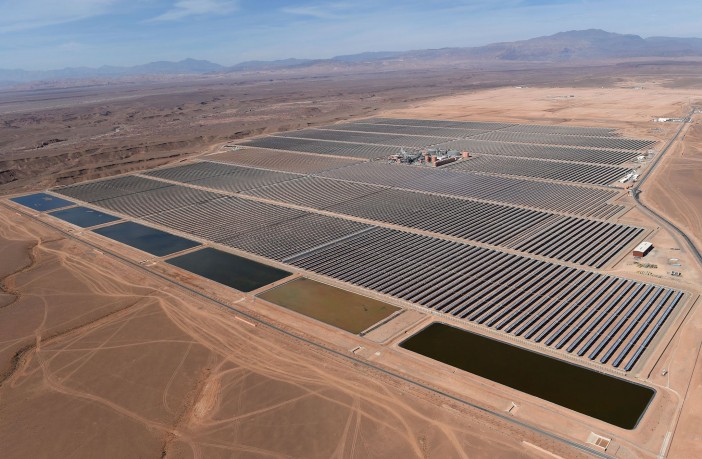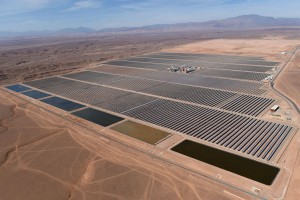Business Standard
IANS
Four years ago, Morocco imported 93 percent of its energy needs. By 2030, it hopes to get 52 per cent from renewables. Just how serious the country is about solar power comes across loud and clear to visitors as soon as one crosses the Mohamed V International Airport here.
Large solar panels along the road and street lights topped with solar panels line the way for a few miles — highlighting how the north African nation is moving firmly ahead in its mission to become a solar superpower.
Morocco’s King Mohammed VI earlier this month launched the fourth and final phase of the world’s largest solar energy plant — Noor Solar in Ouarzazate, on the edge of the Sahara desert. Noor is the Arabic word for light.
The first phase of the $9 billion project was launched in 2013, while the second and third phases were launched in 2016.
When completed in 2018, the desert solar power complex will have a 582 MW capacity, enough to power 1.1 million homes — and would measure the size of capital Rabat.
Morocco’s leadership in renewable energy was highlighted at last month’s Crans Montana Forum where Said Moufti, Research Director of the Royal Institute for Strategic Studies, pointed out that solar and wind power plants had been set up all over the southern provinces. “Morocco is showing by way of example,” he said.
The first phase of Noor, which was commissioned in February 2016, uses 500,000 curved mirrors spread over thousands of acres of desert to generate up to 160 MW, making it one of the world’s biggest solar thermal power plants.
The mirrors are part of technology called concentrated solar power (CSP). The 39-foot-tall parabolic mirrors focus the sun’s energy to heat fluid in pipelines, which when mixed with water, produces steam to drive a turbine.
This system can store power after the sun goes down and generate power at night.
While Phases II and III are also CSP projects, Noor IV, the final phase, uses photovoltaic (PV) technology to produce electricity.
The entire Noor project, when ready, will help reduce CO2 emissions by 760,000 tonnes a year and by 17.5 million tonnes over 25 years, according to reports.
Morocco’s stress on renewable energy will not only help the country reduce its energy imports, but also generate revenue from exporting energy across the Mediterranean to Europe and to its neighbours in Africa.
Morocco, a country of 33 million people, is the only African country with a power cable link to Europe.
The stress on renewable energy will also create jobs.
Morocco currently employs about 3,000 people in the renewable energy sector. According to a study by the Euro-Mediterranean Forum of Institutes of Economic Sciences (FEMISE), the country is expected to create between 270,000 and 500,000 new green jobs by 2040.
The report was released at the COP22 held in Marrakech last year.
The Noor project is being developed on a build, own, operate and transfer (BOOT) basis by ACWA Power Ouarzazate, a consortium of Saudi Arabia’s ACWA Power, the Moroccan Agency for Solar Energy (MASEN), Aries and TSK.
Morocco is also focusing on wind energy. It has set up the Tarfaya wind farm complex — said to be the largest in Africa — stretching more than 100 sq km across the Sahara desert, on the southern Atlantic coast.
(The writer was in Morocco at the invitation of the Crans Montana Forum. Ranjana Narayan can be reached at ranjana.n@ians.in)
–IANS
rn/vm/sac








